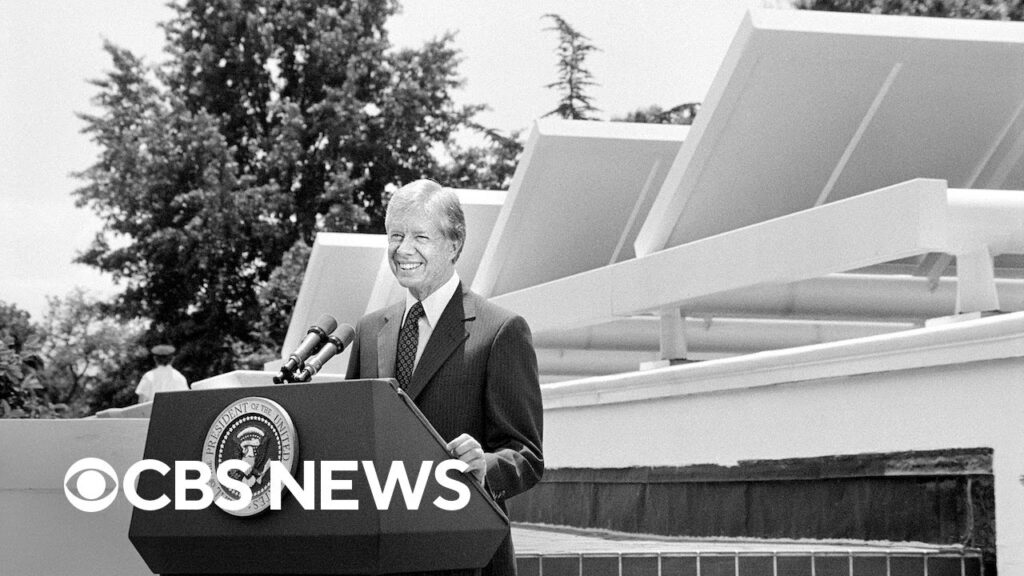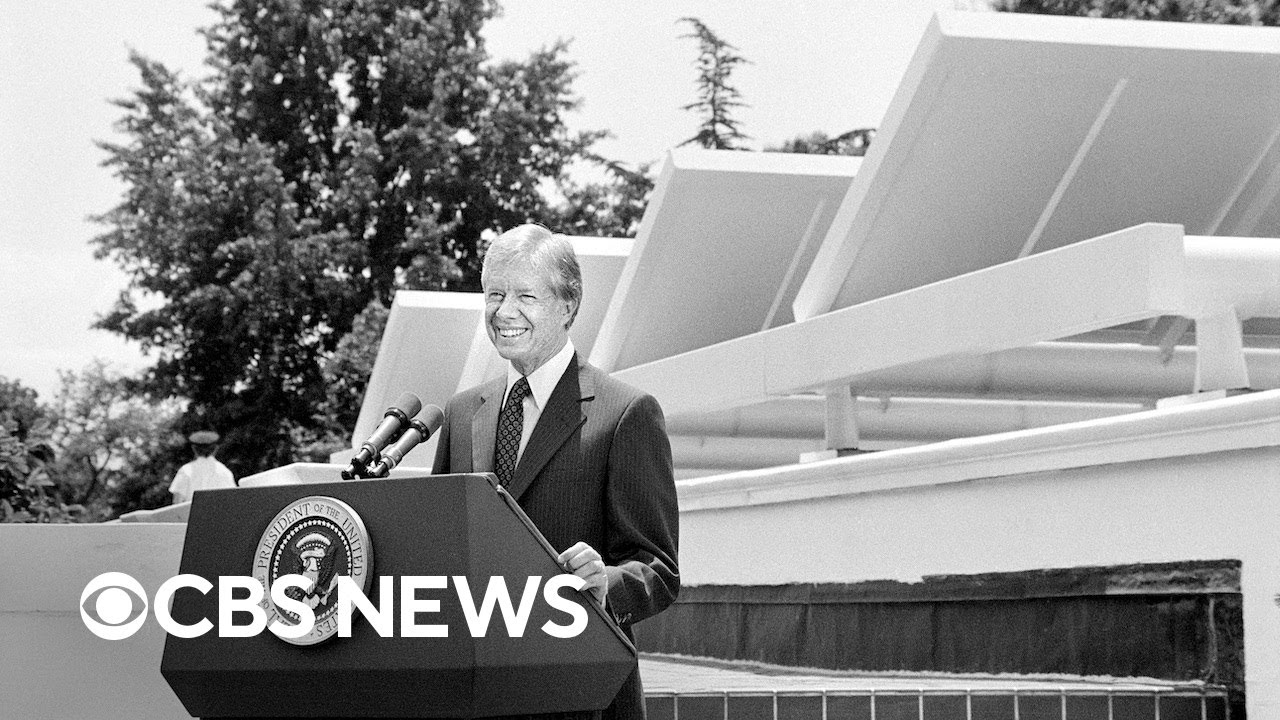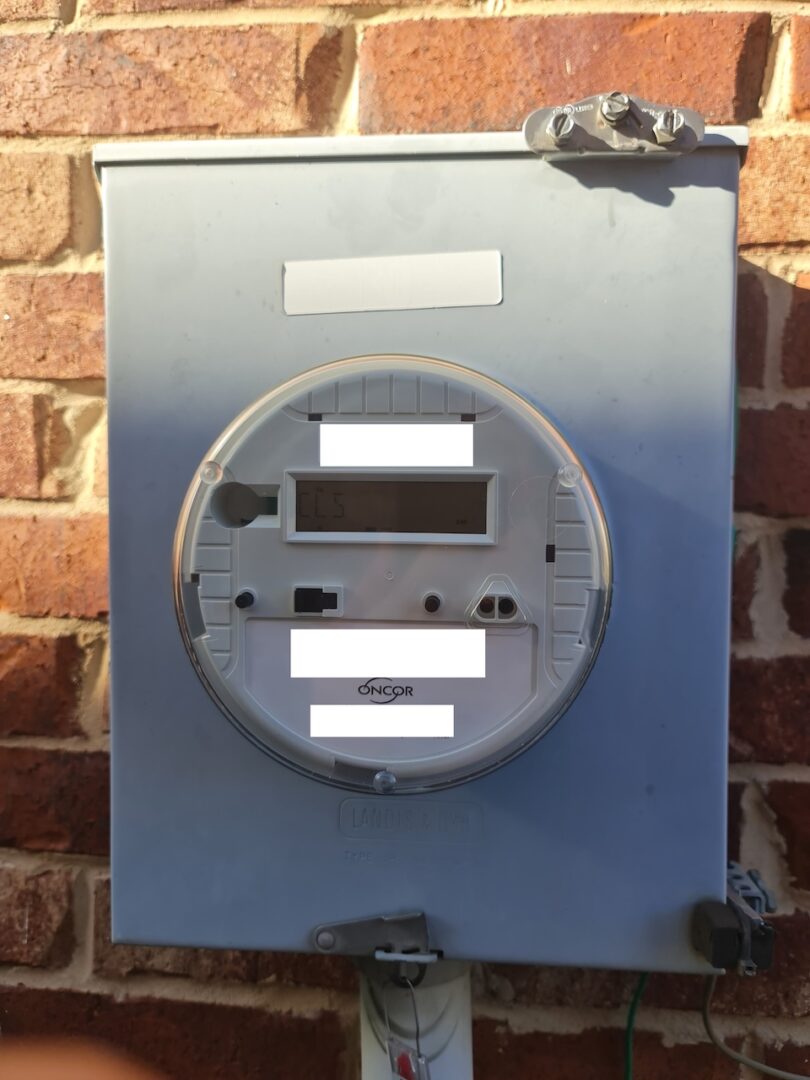Jimmy Carter’s Vision for Solar Energy: The 1979 Breakthrough
The Birth of Solar Energy Advocacy Under Jimmy Carter in 1979
In 1979, President Jimmy Carter made a landmark decision that would have lasting implications for the future of solar energy. During his time in office, Carter made solar energy a national priority, championing renewable sources as a viable solution to the nation’s growing energy concerns. This vision began to take shape with Carter’s installation of solar panels on the White House roof, a symbolic and practical demonstration of his commitment to clean energy.
At the time, the U.S. was facing an energy crisis due to rising oil prices, and Carter’s leadership pointed the country toward an alternative solution—solar energy. His decision to install solar panels on the White House wasn’t just about adopting new technology; it was about leading by example and setting a precedent for the nation. Jimmy Carter’s advocacy for solar energy in the late 1970s was a revolutionary moment that sparked conversations about the future of energy independence and sustainability in the U.S.
Discover savings with our unique calculator, the only one of its kind! Get tailored results.
Have questions or need assistance? We’re here to help, feel free to reach out to us today!
How Jimmy Carter Paved the Way for Solar Energy Development
Jimmy Carter’s dedication to solar energy didn’t stop with the White House installation. His administration pushed for the development of solar energy technologies and increased federal funding for renewable energy research. The 1979 Solar Energy Research, Development, and Demonstration Act was one of the key pieces of legislation passed during his tenure, setting the stage for greater investment in solar technology.
Carter’s vision was clear: renewable energy sources, like solar, could reduce the country’s reliance on foreign oil while providing a cleaner, more sustainable energy solution for the future. While the political climate shifted after his presidency, Carter’s policies laid the groundwork for the future of solar energy, inspiring both private sector innovation and federal support for solar research in the decades that followed.
A Bold Move: The Solar Panels on the White House Roof in 1979
Perhaps the most iconic symbol of Jimmy Carter’s push for solar energy was the installation of solar panels on the White House roof in 1979. This bold move sent a powerful message to the world: the United States was ready to embrace renewable energy technologies. The solar panels provided hot water for the White House, highlighting the practicality of solar energy in everyday use.
Despite facing political challenges after leaving office, Carter’s decision to make the White House a beacon of renewable energy would remain one of his most memorable actions. The solar panels were removed under President Ronald Reagan’s administration, but Carter’s influence had already paved the way for a new era of energy thinking, one that continues to shape the conversation around sustainability and solar energy today.
Jimmy Carter’s Legacy in Solar Energy
While Carter’s presidency may have been cut short, his legacy in the field of renewable energy, particularly solar energy, is undeniable. The decision to invest in solar technologies during a time of energy uncertainty provided the foundation for much of today’s renewable energy landscape. In the years following Carter’s leadership, solar energy would grow into a multi-billion-dollar industry, helping the U.S. and other countries move toward cleaner, greener energy options.
President Jimmy Carter’s advocacy for solar energy in 1979 stands as a testament to his foresight and commitment to the future of both the country and the planet. The actions he took during his presidency continue to inspire generations of energy innovators and environmental advocates, ensuring that solar energy remains an essential part of the global energy conversation.
Source: https://www.youtube.com/watch?v=qh_VquQVypw




